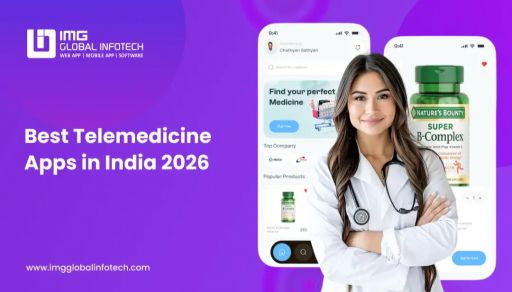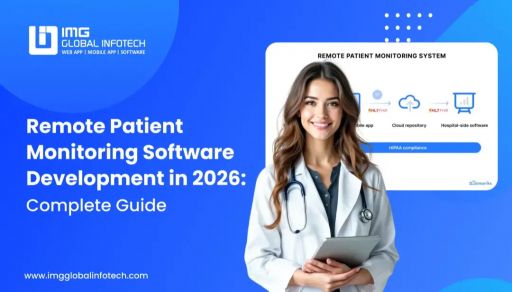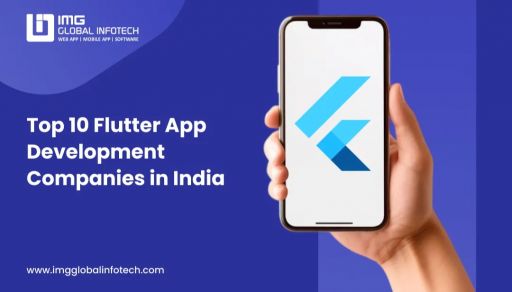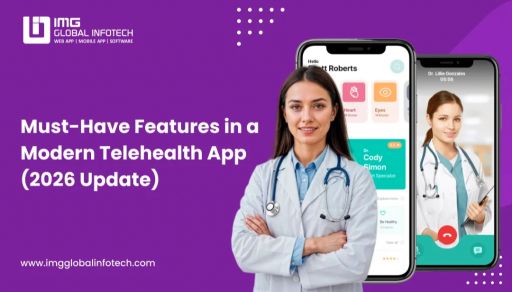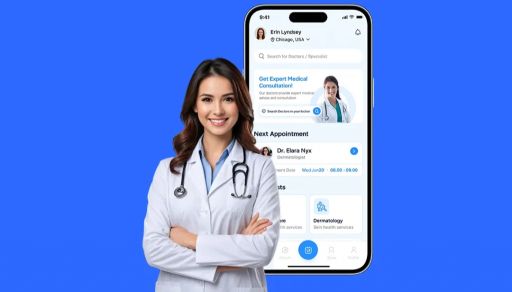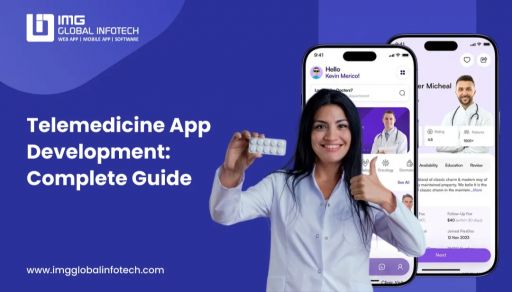How Much Does It Cost To Build An App Like HungerStation In 2025?
Neeraj Rajput
Jul 27, 2025
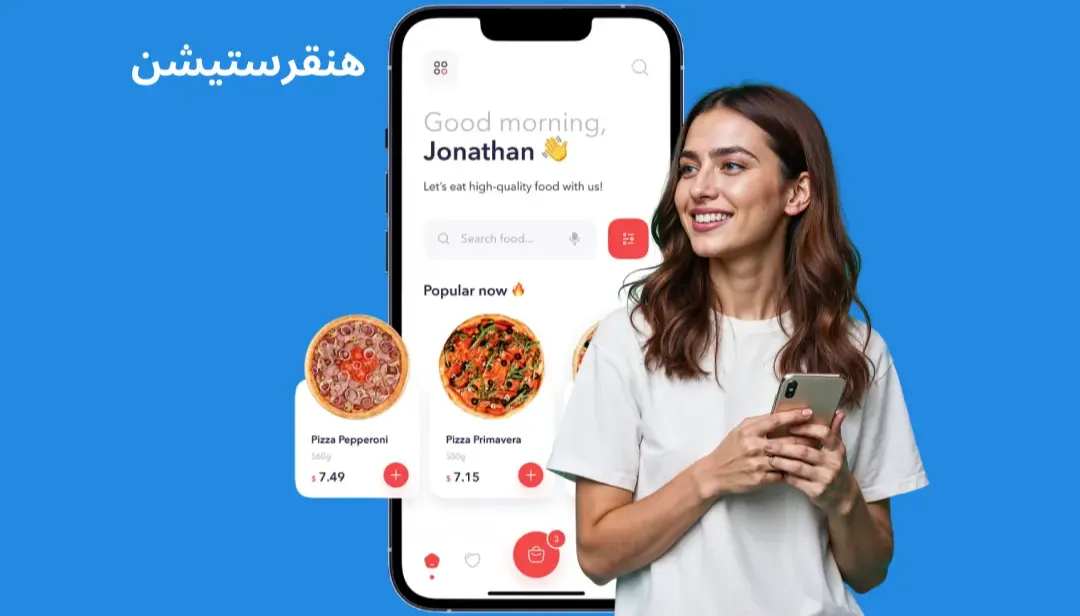
HungerStation is one of Saudi Arabia's leading on-demand food and grocery delivery platforms. Launched in 2012, it has transformed the way customers order food by connecting users with nearby restaurants and stores through a feature-rich mobile application. Owned by Delivery Hero, the app offers real-time tracking, a wide vendor network, diverse payment methods, and an intuitive user experience.
With the growing adoption of smartphones, tech-savvy consumers, and the rising demand for convenience, the food delivery industry in the Middle East is booming—particularly in Saudi Arabia. HungerStation has tapped into this opportunity and established itself as a market leader by delivering not just food but also groceries, pharmacy products, and more.
If you're an entrepreneur looking to build an app like HungerStation, now is the time to invest. With a strong user base, scalable tech infrastructure, and proven revenue model, a HungerStation-like app promises lucrative business opportunities in 2025 and beyond.
What is HungerStation?
HungerStation is an all-in-one food and grocery delivery app operating in Saudi Arabia and Bahrain. It connects users with thousands of restaurants, cafes, grocery shops, and pharmacies, allowing seamless ordering via mobile apps for both Android app and iOS.
The app allows customers to place orders, track them in real-time, and pay using various digital options. HungerStation supports multiple languages and offers excellent UX with clean UI elements.
HungerStation’s success lies in its on-demand delivery model, smart logistics, and personalized offerings, setting a benchmark for entrepreneurs planning a HungerStation clone app.
Why Build a Food Delivery App Like HungerStation?
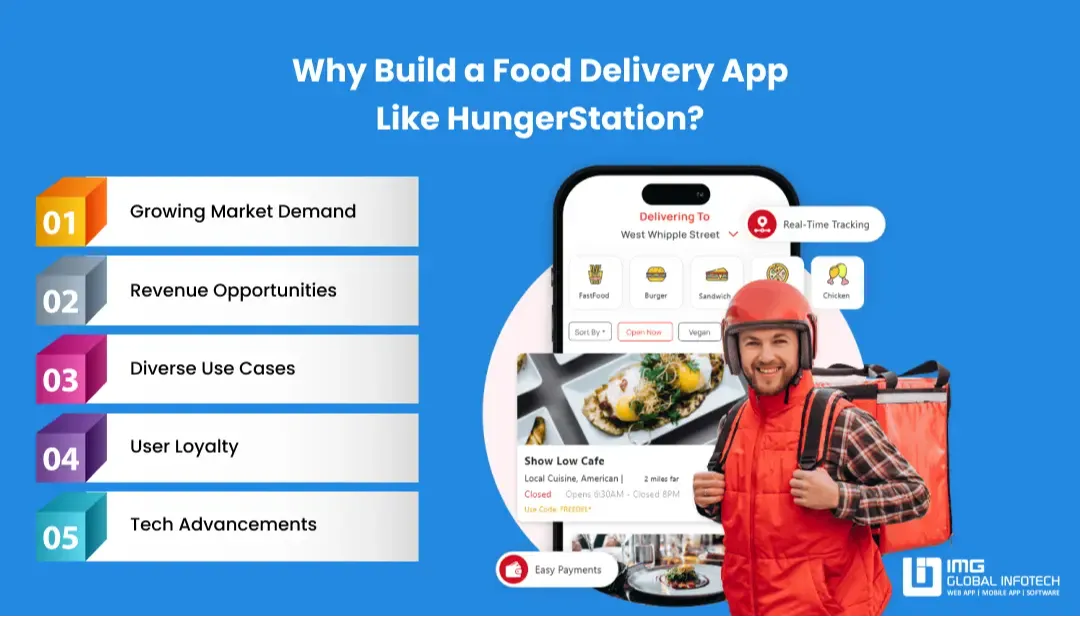
The demand for on-demand food delivery apps is at an all-time high, particularly in the Middle East. Saudi Arabia, with its growing digital population and strong mobile penetration, provides an ideal ecosystem for launching such services.
Here’s why you should create a food delivery app in Saudi Arabia like HungerStation:
-
Growing Market Demand: Saudi Arabia’s food delivery market is expected to reach over $10 billion by 2027, driven by urban lifestyles and smartphone usage.
-
Revenue Opportunities: Apps like HungerStation make money via delivery charges, service fees, restaurant commissions, advertisements, and subscriptions.
-
Diverse Use Cases: The app can serve not only food but also grocery, pharmacy, and flower deliveries, creating multi-vertical opportunities.
-
User Loyalty: With real-time tracking, loyalty rewards, and promotional offers, platforms like HungerStation retain users effectively.
-
Tech Advancements: AI, route optimization, push notifications, and advanced analytics help scale operations smoothly.
By developing a HungerStation-like app, businesses can tap into a rapidly expanding customer base, offer local vendors a digital storefront, and gain a competitive edge in the MENA region.
Cost to Develop a Food Delivery App Like HungerStation
The cost to develop a food delivery app like HungerStation depends on multiple factors including app complexity, platform (Android/iOS), features, UI/UX design, tech stack, and development location.
Here’s a breakdown based on project scope:
Key Cost Influencers:
-
Features: Real-time tracking, GPS, push notifications, payment gateway, loyalty programs.
-
Design: Intuitive UI/UX with multi-language and multi-currency support.
-
Platforms: Native apps for Android and iOS cost more than hybrid solutions.
-
Backend Development: Cloud database integration, admin dashboards, APIs.
-
Third-party APIs: Integration for maps, SMS, payment gateways, etc.
-
Development Partner: Hiring a food delivery app development company in India like IMG Global Infotech can save up to 40% on costs compared to US or Europe-based agencies.
To get an exact cost estimation, you can request pricing for HungerStation app development from top companies offering affordable food delivery app development services.
HungerStation App Development Process
Creating a HungerStation-like app requires structured planning, tech execution, and testing. Below is the step-by-step guide to develop a HungerStation-like app:
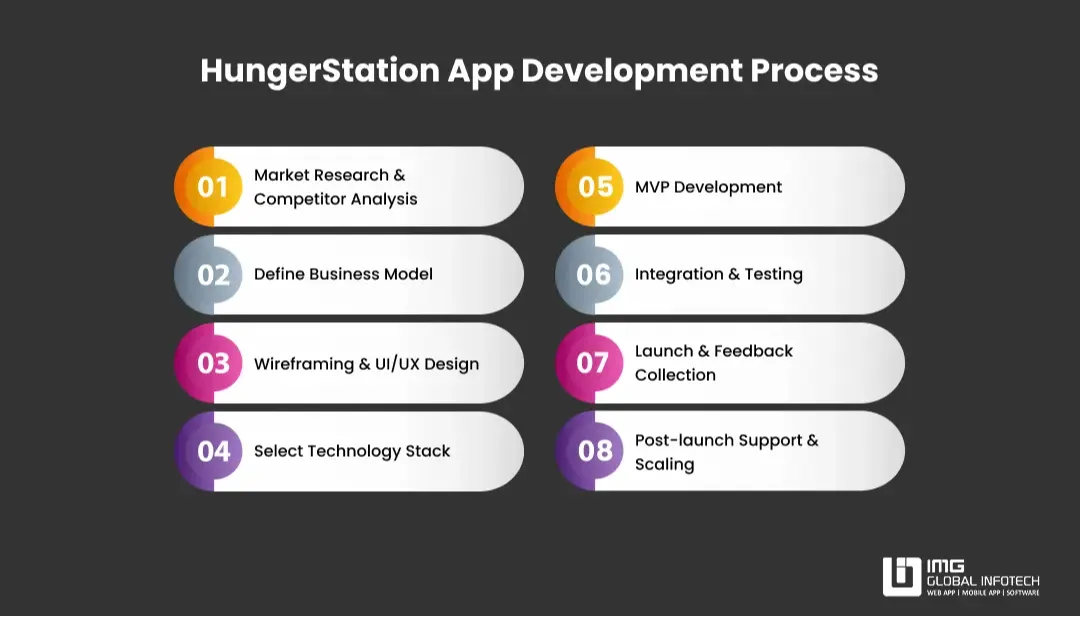
1. Market Research & Competitor Analysis
Start by analyzing the Saudi food delivery market, focusing on trends, consumer preferences, and competitor apps like Jahez and Talabat. Study HungerStation’s strengths and weaknesses to identify market gaps. This research helps in positioning your app strategically and defining unique selling points (USPs) that resonate with your target audience for higher success rates.
2. Define Business Model
Choose a scalable business model such as commission-based, subscription, or mixed. Decide how you'll earn: through delivery charges, partner commissions, ads, or premium features. Define your value chain—will you manage deliveries or rely on third parties? A strong, sustainable model is crucial before investing in your HungerStation-like app development journey.
3. Wireframing & UI/UX Design
Create a wireframe outlining app screens and flow for customers, restaurants, delivery agents, and admins. Prioritize a clean UI with multilingual support and intuitive UX for easy navigation. Focus on responsive design, fast loading, and real-time interactions to replicate HungerStation’s user experience UI/UX Design and increase customer satisfaction and retention.
4. Select Technology Stack
Choose a tech stack suited for scalability, performance, and integration. For frontend, use Flutter or React Native; backend can be Node.js or Laravel. Ensure support for real-time updates, secure payments, geolocation, and push notifications. Your stack must support future features like AI recommendations and advanced analytics for business growth.
5. MVP Development
Develop a Minimum Viable Product (MVP) with core features like user registration, restaurant listings, order placement, and real-time tracking. Launch the MVP to gather early feedback and validate your concept in the market. Building an MVP helps save time and cost while identifying critical areas for improvement before full-scale deployment.
6. Integration & Testing
Integrate third-party APIs like Google Maps, Stripe, Twilio, and payment gateways for real-time functionality. Perform manual and automated testing to eliminate bugs, ensure data security, and validate app performance. Focus on functional, usability, and compatibility testing across devices to offer a flawless HungerStation clone app experience from day one.
7. Launch & Feedback Collection
Once tested, launch your app on Play Store and App Store. Use digital marketing, app store optimization, and influencer collaborations for promotion. Encourage users to give feedback and ratings. Analyze reviews to fix issues quickly and make iterative updates. This customer-first approach drives early traction and organic user growth.
8. Post-launch Support & Scaling
Offer regular updates, add new features, and ensure server uptime. Use analytics to understand user behavior and personalize offerings. Scale geographically or into new delivery verticals like groceries or pharmacy. Long-term support, marketing, and performance monitoring are key to maintaining and growing your on-demand food delivery app like HungerStation.
Key Features of an App Like HungerStation
To match HungerStation’s success, your app must include a comprehensive feature set:
Customer App Features
1. User Registration & Login
Allow users to sign up or log in via email, mobile number, or social media. Ensure secure authentication and quick access to personalized dashboards for a seamless onboarding experience.
2. Location Detection & Address Management
Automatically detect the user’s current location using GPS. Enable users to save, edit, and manage multiple delivery addresses for convenience and faster checkout.
3. Search & Advanced Filters
Let users find restaurants or dishes using keyword search, cuisine type, ratings, offers, or delivery time filters. This enhances discoverability and improves order placement speed.
4. Real-Time Order Tracking
Enable customers to track their order status live—from preparation to pickup and delivery. Real-time updates build transparency and increase customer satisfaction.
5. In-app Chat & Notifications
Provide chat support with restaurants or delivery agents. Send push notifications for order updates, promotions, and alerts to keep users engaged and informed.
6. Multiple Payment Options
Offer flexibility with payment methods like COD, credit/debit cards, mobile wallets, and digital gateways like PayTabs or STC Pay for secure transactions.
7. Order History & Reorder
Allow users to view previous orders and quickly reorder their favorite meals. This feature improves user convenience and encourages repeated use.
8. Ratings & Reviews
Enable customers to rate restaurants, delivery agents, and food quality. Reviews guide others and give feedback to partners for improving services.
Restaurant Partner Panel Features
9. Vendor Dashboard
Restaurants get a dedicated dashboard to manage menus, pricing, inventory, and incoming orders. They can view analytics and performance reports for decision-making.
10. Menu & Pricing Management
Allow vendors to add, update, or remove items, prices, and availability. Real-time syncing ensures accurate menu visibility on the customer side.
11. Order Management System
Restaurants can accept, reject, or mark orders as ready. Instant notifications keep operations streamlined and reduce customer wait time.
12. Earnings & Reports
Vendors can track daily/weekly earnings, commission deductions, and performance insights. This transparency helps partners optimize their operations and profitability.
Delivery Agent App Features
13. Order Assignment & Navigation
Delivery personnel receive new orders with pickup and drop locations. Integrated GPS helps them follow optimized routes for faster deliveries.
14. Route Optimization
Drivers get automated route suggestions to avoid traffic and reduce delivery time. This improves efficiency and ensures timely order completion.
15. Availability Toggle
Delivery agents can mark themselves available or offline. This flexibility helps manage workload and ensures fair order distribution across active agents.
16. Delivery History
Agents can review past deliveries, track earnings, and view performance stats. This helps with performance monitoring and transparent payout management.
Admin Panel Features
17. User Management
Admins can monitor and manage user accounts, block suspicious users, and ensure platform safety through role-based access and activity logs.
18. Restaurant & Driver Management
Admins approve new vendors and drivers, manage onboarding, verify documents, and monitor performance through real-time dashboards.
19. Promotions & Discounts
Create and manage promo codes, loyalty offers, and referral programs. Admins can track campaign success and adjust promotions accordingly.
20. Advanced Analytics & Reporting
Get detailed insights into app usage, revenue, top restaurants, user behavior, and more. Data-driven decisions help scale the business efficiently.
Tech Stack Required for HungerStation-Like App
To ensure performance, scalability, and security, use the following technology stack for food delivery app development:
Frontend:
-
React Native / Flutter (Cross-platform)
-
Swift (iOS)
-
Kotlin (Android)
Backend:
-
Node.js / Laravel / Django
-
MongoDB / PostgreSQL for database
-
Firebase for real-time database and notifications
APIs & Integrations:
-
Google Maps API – for geolocation and directions
-
Stripe / PayTabs / PayFort – for secure payments
-
Twilio / Firebase – for OTP and SMS alerts
-
SendGrid – for email notifications
-
Cloudinary / AWS S3 – for image storage
DevOps & Hosting:
-
AWS / DigitalOcean / Azure
-
Docker / Kubernetes
-
CI/CD Tools like Jenkins or GitHub Actions
This stack ensures high performance and smooth integration for on-demand delivery app development projects like HungerStation.
Also Read - Leading Food Delivery App Development Companies In USA
Conclusion
The popularity of HungerStation showcases the rising demand for on-demand food delivery solutions in Saudi Arabia and the broader Middle East. By investing in HungerStation-like app development, you can tap into a profitable business model backed by technology, convenience, and customer loyalty.
Whether you're planning to launch a startup or digitize an existing food business, the cost and complexity of development depend on your goals, features, and choice of technology partner.
At IMG Global Infotech, we simplify the development journey by offering affordable, scalable, and customized food delivery app solutions that match your business model.
Neeraj Rajput is the co-founder of a leading IT company with over a decade of experience in technology consulting, product development, and digital transformation. With a passion for solving complex business challenges through smart tech solutions, he shares insights on innovation, leadership, and the evolving IT landscape


